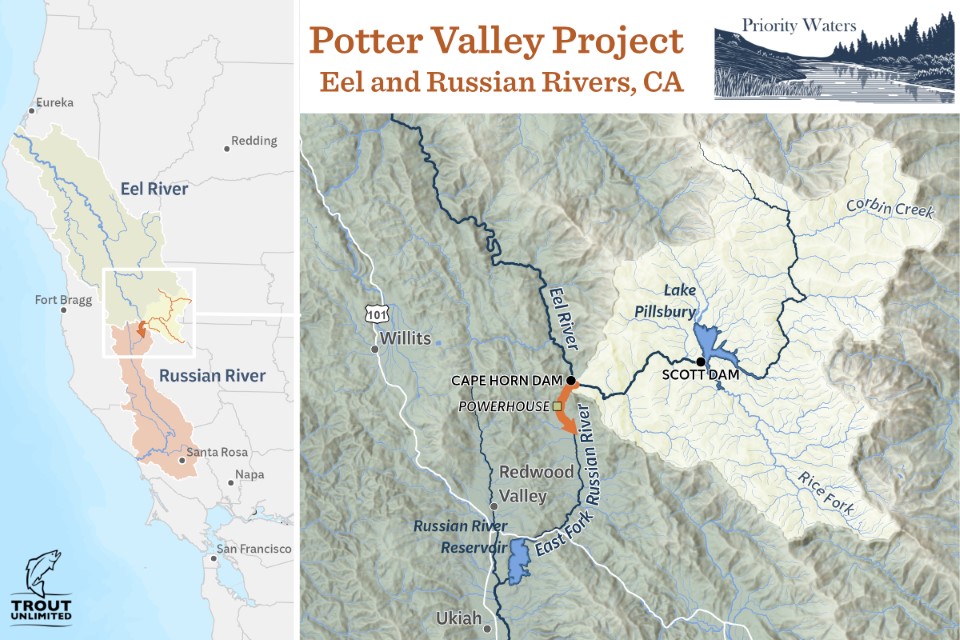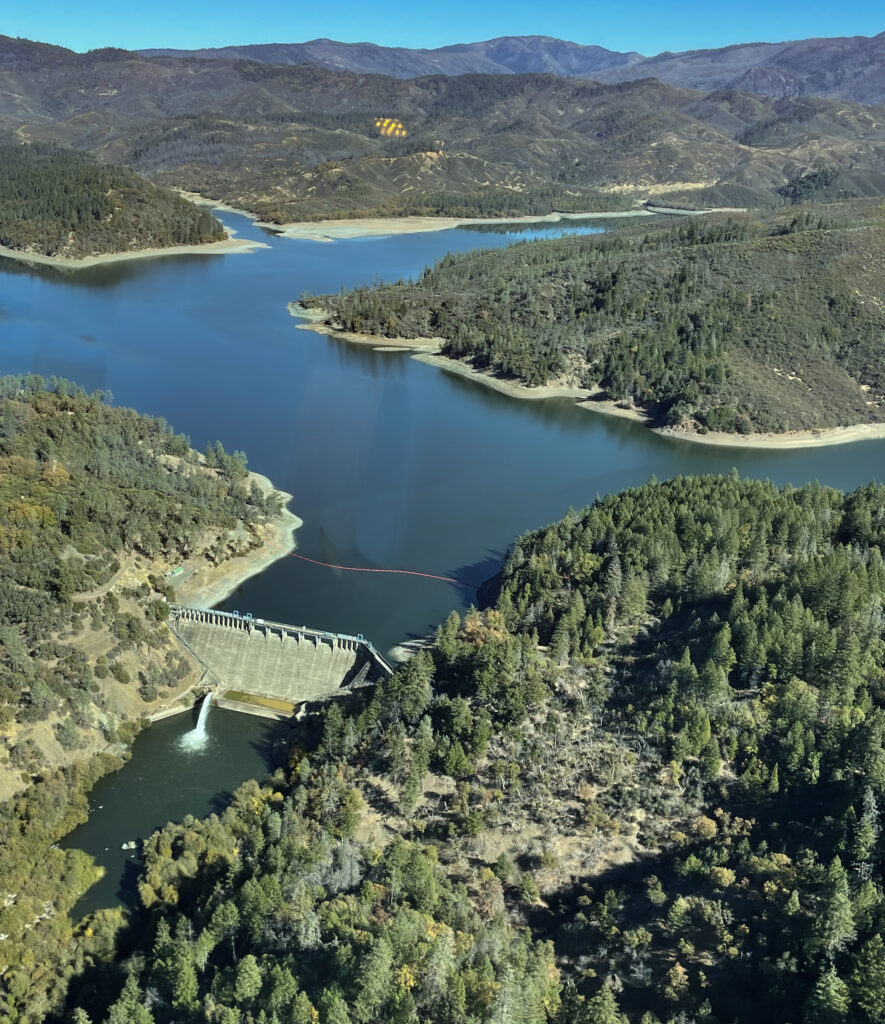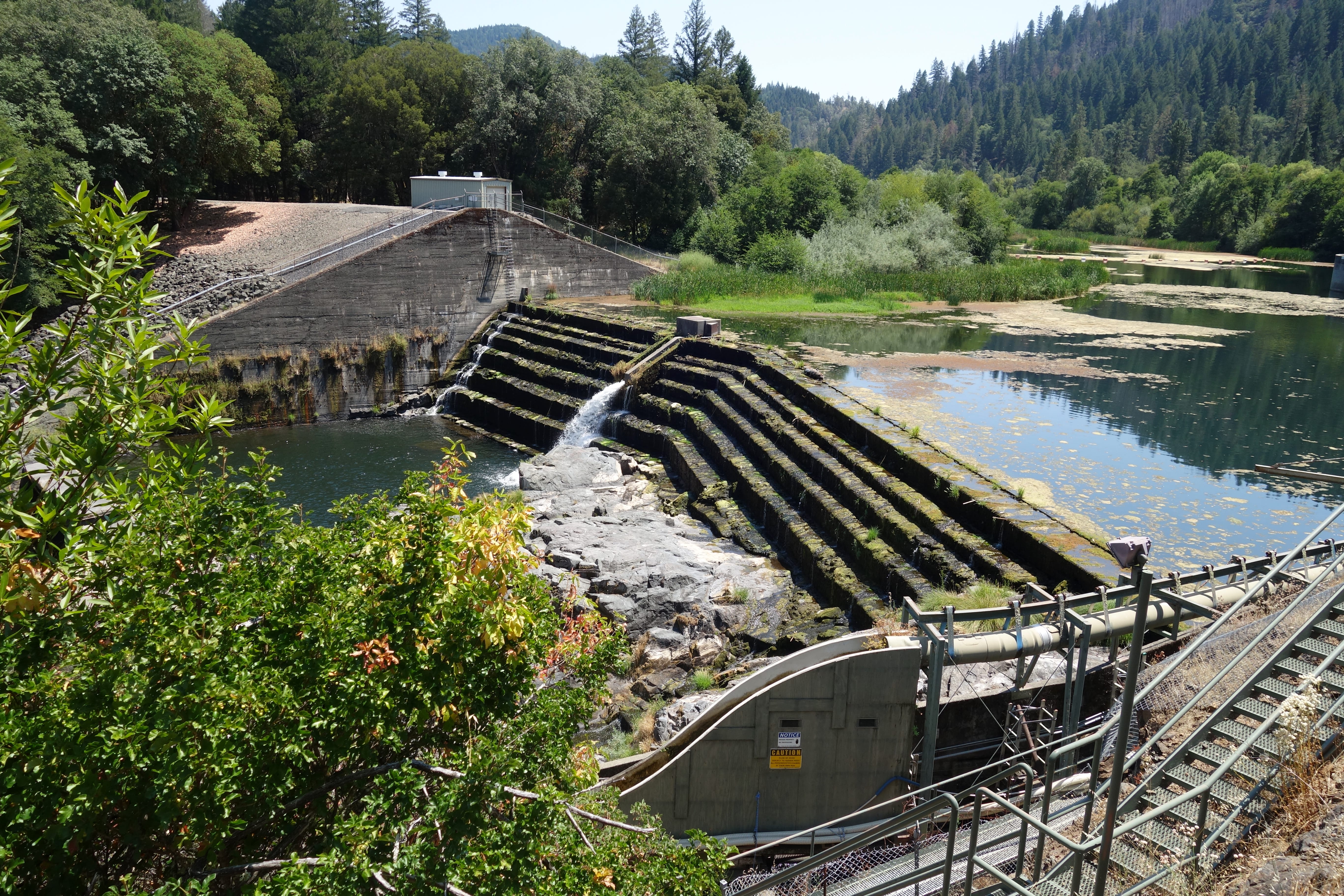As dam removal moves ahead, an innovative collaborative plan to share the basin’s water and restore its iconic salmon and steelhead runs is finalized
On California’s mighty Eel River, Pacific Gas & Electric’s (PG&E) plan to remove the two dams comprising the Potter Valley Project continues to move forward.
On Friday, July 25th, the utility submitted materials to surrender their license to operate the uneconomical dams to the Federal Energy Regulatory Commission (FERC), a critical step in the process leading towards eventually removing the barriers.
Dam removal on the Eel River will reconnect 288 miles of exceptional salmon, steelhead and lamprey habitat in the watershed’s cold headwater streams; critical spawning and rearing habitat that has been blocked for over a century.
It is a monumental restoration: Outside of the Klamath Basin, which spans the border of Northern California and Southwest Oregon, this is the largest amount of anadromous fish habitat being reconnected in any California watershed.

A two-basin solution
The Potter Valley Project didn’t only prevent endangered fish populations from reaching historic habitat, the facilities also diverted a substantial portion of the Eel’s flow to the nearby Russian River basin through a massive tunnel. Farms and communities have used that water since the dams were built. The withdrawals were severe and didn’t consider impacts to struggling populations of native salmon, steelhead and lamprey, nor the needs of Indigenous people in the basin.
Fish, agriculture and communities in both the Eel and Russian watersheds all depend on limited supplies of water, and the question of how to resolve this challenge for the two basins has been a source of conflict for decades. The need to find a solution that worked for fish and communities was profound. While dam removal proceeds through its separate legal process, negotiations around water sharing have also been underway over the last year or so.
The negotiations have centered on an effort to reach a “two-basin solution” that would balance fish recovery in the Eel River and water interests in the Russian. TU has been involved in negotiations since the beginning.
In February, we celebrated a breakthrough agreement in principle between the Round Valley Indian Tribes, California Department of Fish and Wildlife, Sonoma Water, Mendocino Inland Water and Power Commission, Humboldt County, California Trout and Trout Unlimited that cleared the way for fish recovery and sustainable water sharing between the two basins.

In late July, the parties finalized the new Water Diversion Agreement.
“This is a landmark moment for the Eel and Russian river basins,” said Matt Clifford, TU’s California director. “For over a hundred years, these dams have created conflict between fish and people, and between communities in the two watersheds. PG&E’s removal of the dams, coupled with the agreement for a new dam-free, fish-friendly water diversion, provide a way to finally resolve those conflicts once and for all and create a secure future for both native fish and water supplies.”
“Few things harm sea-run fish species as much as dams, and no other dams in California block as much undeveloped, high-quality spawning and rearing habitat for steelhead and salmon as the Potter Valley Project dams on the Eel River,” said Brian Johnson, TU’s senior policy advisor for western water and climate. “TU has been investing in the Eel River for decades and working on this hydropower project for more than ten years, and PG&E’s filing confirms that those dams will be coming out.
“On behalf of our members and everyone who cares about California’s native salmon and steelhead, we recognize PG&E for this major step and congratulate our partners in the two-basin solution for developing a plan to end more than a century of conflict over water on the Eel River,” he continued.
Sharing the water
The two-basin deal memorialized in the Water Diversion Agreement is a collaborative plan that builds a durable, sustainable path forward for all. While the utility isn’t a signatory to the agreement, PG&E has committed to supporting a two-basin water sharing plan and shifting ownership of their water rights in a way that makes it viable.
The agreement calls for ownership of the entire package of water rights associated with the Potter Valley Project to ultimately transfer to the Round Valley Indian Tribes, though PG&E will need to sign off on that transfer.
The agreement allows for Russian basin water users to construct a new, dam-free pump station that will allow continued water diversion to the Russian at sustainable rates, subject to scientifically derived limits to protect salmon and steelhead recovery on the Eel River. It also establishes rigorous parameters for ongoing monitoring, management and enforcement of water diversions.
The water users will make annual payments to the Tribe, and part of that revenue will be dedicated to habitat restoration projects (above and beyond dam removal) throughout the Eel River basin. All the signatories of the agreement have also committed to raising additional state, federal and private funding to support ongoing habitat restoration and construction of the new diversion.
In February, the State of California announced that it will commit an initial $18 million to support the water sharing agreement––$9 million for the pump station and $9 million for Eel River restoration.
The agreement provides water security for the next 30 years and includes provisions to extend the parameters further if its metrics for success are met.
A better option
The Potter Valley Project’s dams haven’t produced power in the last five years, and recent studies have shown they are at greater risk of structural failure in an earthquake than was previously understood.
PG&E tried to sell the dams, but no buyer stepped forward. The utility therefore opted not to renew its operating license when it expired in 2022, and FERC ordered the company to prepare a plan to decommission the facilities.
Because they are separate processes with different legal implications, dam removal on the Eel River would continue with or without a plan for the water that had previously been diverted from the basin.
The two-basin solution is the better option. It is a testament to the value of meeting communities at the table and working hard to find a sustainable way forward together.
For the first time in generations, recovery of the Eel River’s native salmon, steelhead and lamprey is being prioritized; the water rights will be in the hands of the basin’s native people; and the communities that depend on the basin’s water have a durable, shared future.
Stay tuned
As FERC considers PG&E’s proposal to surrender their license to operate the Potter Valley Project, there will be important public comment opportunities for TU members and supporters to speak up on behalf of reconnecting the Eel River.
In the meantime, learn more about TU’s work in the region at North Coast California Priority Waters.



